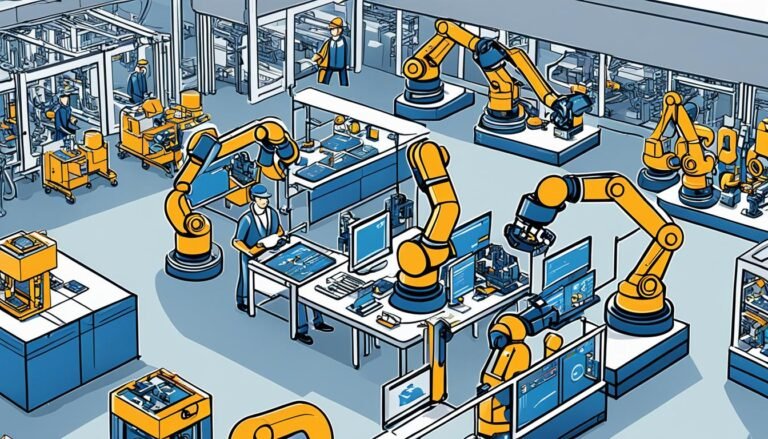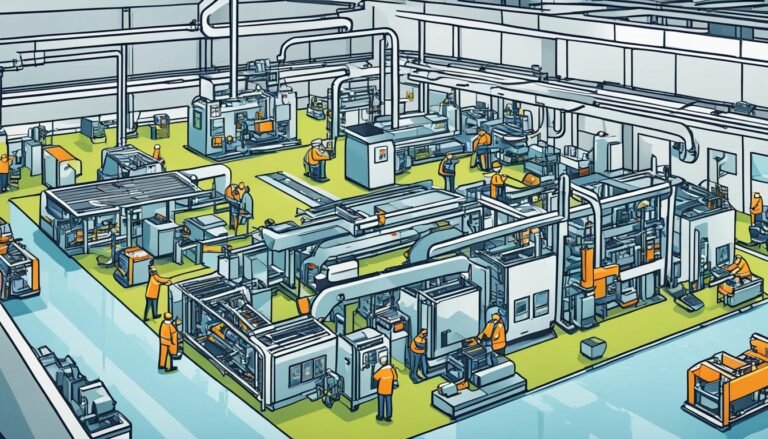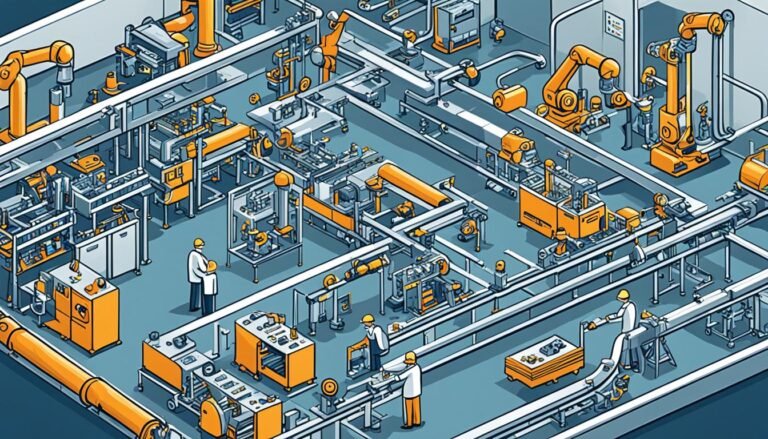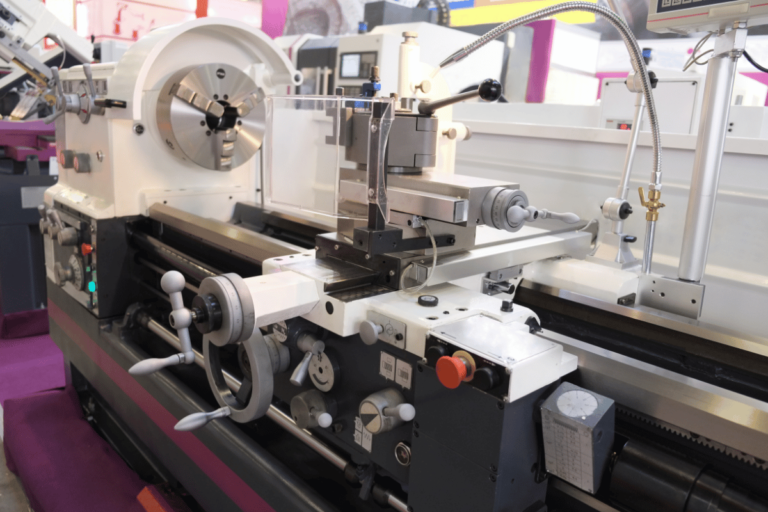Critical Thinking for Operational Excellence in Manufacturing
Did you know that companies in the manufacturing sector that focus on critical thinking do better? They are more likely to excel in operations, make customers happy, and do well financially. This fact comes from a Deloitte study. It shows how critical thinking is key for quick thinking and steady growth in manufacturing.
Being the best in manufacturing is essential, not just a dream. Adding critical thinking to daily work helps employees stay on track with the company’s goals. This means they focus on adding value for the customer. With better problem-solving skills, companies can quickly adjust to new market trends, use resources wisely, and stay ahead in the competition.
Key Takeaways
- Critical thinking is key for doing well in manufacturing, making customers happy, and making more money.
- Putting critical thinking first helps the team understand and follow the company’s vision, making sure customers get value.
- Being good at solving problems helps companies quickly change with the market and use resources better.
- Putting a big focus on critical thinking leads to new ideas and ongoing improvement.
- With critical thinking, companies can be more agile and grow steadily in manufacturing.
The Importance of Critical Thinking in Manufacturing
Critical thinking is key in manufacturing. It helps the industry tackle complex challenges. By using critical thinking, manufacturers boost their problem-solving skills, make data-driven decisions, and stay strong in the market.
Enhancing Problem-Solving Skills
Today’s manufacturing is complex, with smart factories, IoT, big data analytics, and AI. This complexity highlights the need for human analysis and strategic thinking. Critical thinking encourages a culture of solution-seekers. These people can tackle problems in production, logistics, and operations.
Good problem-solving skills cut down on disruptions and boost performance. This makes the environment agile and quick to respond to new challenges.
Data-Driven Decision Making
Gathering data is key to solving problems in manufacturing. Using data analytics and technology is vital for making smart decisions. Data-driven decisions are based on accurate analytics, cutting down on waste and improving processes.
This method leads to better operations and supports ongoing innovation and efficiency.
Adapting to Market Changes
The market is always changing, and manufacturers need to stay flexible and open to new trends and tech. Critical thinking helps companies navigate these changes and grab new chances. By always checking and tweaking their strategies, firms can stay ahead and succeed in the long run.
Understanding Operational Excellence
Operational excellence means doing business better than others. It leads to more money, less risk, and lower costs. It needs a big change in how a company works and thinks.
Defining Operational Excellence
It’s about making sure every worker knows how their work helps the customer. The Institute for Operational Excellence says it’s not just about saving money. It’s also about growing sales by making products people want.
Core Principles and Models
The Shingo Model is key to operational excellence. It has ten main principles in four areas: Culture, Improvement, Alignment, and Results. The first principle is about treating everyone with respect and dignity.
It also talks about aiming for perfection and using science to improve. Focusing on processes, quality, and making things flow better are important too.
Understanding the company’s goals and thinking systematically are vital. Continuous improvement is a big part of it. It’s about making things better bit by bit over time.
Industry Examples
Many industries like manufacturing and healthcare use these ideas to make things better. Lean manufacturing and Six Sigma help cut waste and make things more consistent. This makes them more efficient and of higher quality.
In healthcare, making things better has helped patients and made things run smoother. Retailers use these ideas to make their supply chains better and make customers happier.
The goal is to build a culture that always looks for ways to get better. This makes sure customers get the best value at every step.
Applying Critical Thinking for Operational Excellence in Manufacturing
Critical thinking is key for making manufacturing better. Using methods like Root Cause Analysis, Lean Manufacturing, and Six Sigma helps. These methods break down tough problems, make things more efficient, and keep improving.
Root Cause Analysis
Root Cause Analysis helps find the main reasons behind ongoing issues. It’s crucial for solving problems at their core. In manufacturing, this approach has cut quality losses by 75%.
By finding the root causes, manufacturers can make their production more stable and reliable.
Lean Manufacturing and Six Sigma
Lean Manufacturing and Six Sigma change how things work by cutting waste and reducing mistakes. Lean makes operations smoother, using resources better. Six Sigma focuses on being precise and controlling quality.
Together, they bring big improvements in how well things work and how well they’re made. Tools like TPM, CI, Kaizen, and Agile help make processes better. These efforts help reach goals like always delivering on time, showing true operational excellence.
Fostering a Culture of Continuous Improvement
Creating a culture that always gets better means setting clear goals and checking on progress often. It also means everyone in the company works together to improve. This approach changes how things work and affects KPIs and goals.
Leaders are key in showing the right behaviors and starting projects that improve operations. This creates a place where always getting better is the norm.
Leveraging Technology for Operational Excellence
Technology is key to making operations better in today’s manufacturing world. By using digitization, automating tasks, and making systems work together smoothly, companies can get much more done and do it faster.
Role of Digitization
Digitization in manufacturing is more than just getting new tools. It’s about changing how things work at the core. With tech like automation, robotics, AI, and IoT, companies can cut costs by up to 30%. For example, Levi Strauss & Co. cut down on tracking shipments by 98% with digital tools.
Business Process Automation
Automating business tasks makes things run smoother, letting workers focus on more important tasks. This automation has really helped companies, like Kinetico, cut down service time by half with cloud-based solutions. Now, 75% of manufacturers are working on making their systems and teams work better together.
Integration and Connectivity
Getting different systems to work together is crucial. An ERP system is a must for 92% of global manufacturers. But only 12% are really using digital tech fully. Better connections mean less mistakes and everything working together better.
38% of top bosses say they’re not working well together on digital projects. But, having strong tech helps teams stay quick and ready for changes. Technology is key in cutting down on mistakes and making things better all the time. Using these tech tools is a must for companies aiming for top-notch manufacturing.
Benefits of Critical Thinking in Operational Excellence
Critical thinking is key for making manufacturing better. It makes the production process better in quality and efficiency. By teaching employees to think deeply, companies can use their workers’ full potential. This leads to ongoing improvement in three main areas: quality control, making processes better, and empowering employees.
Improved Quality Control
Dr. Joseph Juran started the idea of making things better in the 1970s. He focused on quality control. By using critical thinking, companies can spot mistakes, make systems simpler, and find good solutions.
Using proven methods and standardizing processes leads to high-quality products and happy customers. This creates a culture where learning and following quality rules is normal.
Process Optimization
Improving processes is key to being the best, and critical thinking helps a lot. Lean thinking is about getting rid of things that don’t add value. Critical thinking helps look at data, find slow spots, and make plans to do better and save money.
Companies use less resources and make products cheaper. This helps leaders make smart choices, leading to ongoing improvement at all levels.
Employee Empowerment
Empowering employees makes them feel like they own their work and are responsible. When they solve problems, they take an active role in making things better. This leads to smarter decisions and supports the company’s goals.
Training and a culture of learning are important for this. Happy employees stay with the company longer, which helps in hiring and keeping the company stable.
Conclusion
Putting critical thinking at the heart of manufacturing is key to a better workforce. It boosts problem-solving skills and encourages new ideas. This makes customers happier and businesses more efficient.
Using lean manufacturing methods like Value, Flow, and Perfection helps cut waste and increase output. Tools like 5S and Kaizen help improve processes step by step. Digital tools like data analytics and IIoT devices also play a big role in making things better.
Companies like Apple show how this approach can lead to more satisfied customers and higher profits. They focus on making their processes efficient and standard. This way, they can keep up with changes in the market and stay ahead of the competition.
Reaching operational excellence is an ongoing process. It needs active employee involvement, strong leadership, and a focus on what customers want. By making decisions based on data and encouraging a culture of solving problems, the manufacturing industry can achieve lasting success.
Source Links
- What is Operational Excellence in Manufacturing? – Parsable
- Critical Thinking: An Excellent Tool to Thriving in the Future of Manufacturing Leadership
- Boosting Manufacturing Success: A Guide to Mastering Problem-Solving and Critical Thinking
- What do you do if your manufacturing operations encounter a problem that requires critical thinking?
- What Is Operational Excellence and How to Achieve It?
- Key Principles of Operational Excellence | Smartsheet
- What Is Operational Excellence? Definitions, Tips, and Best Practices Revealed
- Discipline and Operational Excellence | Milliken
- Operational Excellence: What Is It And How To Achieve It? |
- The Pursuit of Manufacturing Excellence: A Comprehensive Guide
- What is Operational Excellence? 2024 Guide | Pipefy
- Operational Excellence: How to Achieve and Sustain It with Technology
- Achieving Operational Excellence: The Path to Lean Manufacturing Success
- What is Operational Excellence? (How To Achieve and Measure It)
- What Is Operational Excellence? | IBM







